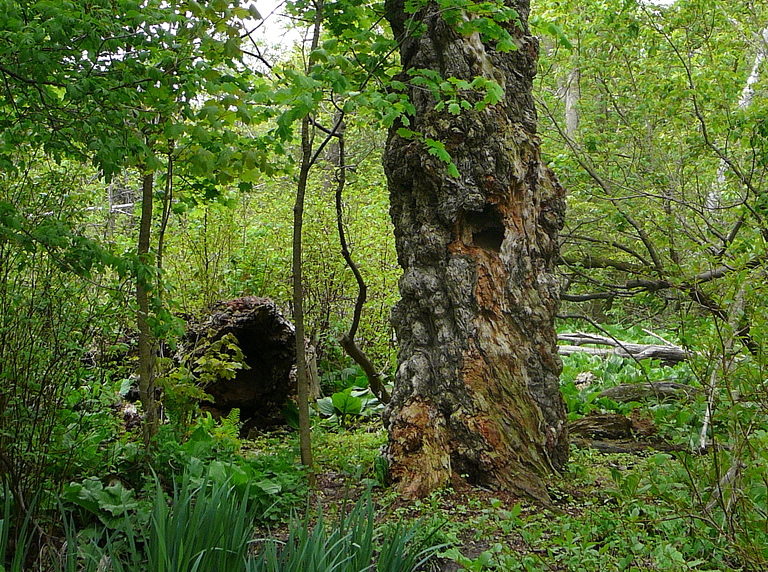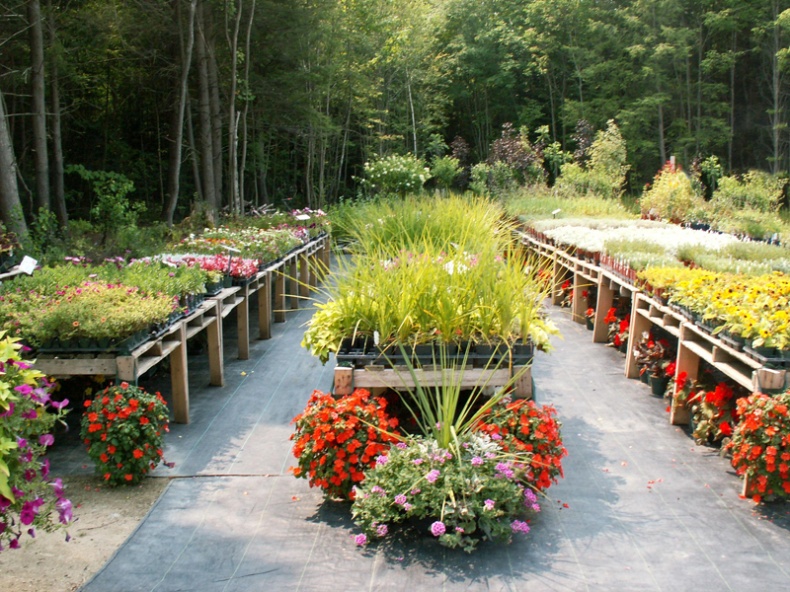
Forest gardening by Anthony Easto
My garden is like heaven for me, as you might have noticed from a couple of my previous posts. In one of my articles, I introduced some of the gardening concepts of the future. This article aims to present a fascinating gardening idea as well — one that is very much a part of our past, present, and future: the ever-trendy forest gardening.
What Is Forest Gardening
Don't let the term "forest gardening" mislead you; it doesn't mean gardening in the forest, but can rather be defined as gardening like a forest. This kind of gardening involves participation in an ecosystem as opposed to trying to impose and sustain an unnatural and unstable monoculture over the successional forces of nature.
Forest gardening is a low-energy input gardening practice with high yields of diversity and nutritionally-dense foods,
Ontario's forest gardening guru and creator of the Living Centre Ontario and the best known forest gardens in the province, Shantree Kacera states, pointing out that forest gardening is both a shift in the way we have been living and growing our food and medicine and a way that nature has been growing food all along. Indeed, it is a wonderful mixture of tradition and modernity.
F for "forest" is the key letter in basic understanding of this concept. In an article published on the website of Growing Food security in Alberta, the term is defined in a witty way, using a number of words starting with the letter F. According to this, forest gardening means
applying the principles of ecology to the design of home and community scale gardens that mimic forest ecosystem structure and function, but grow food, fuel, fibre, fodder, fertilizer, farmaceuticals, and fun.
Simply put, instead of growing plants, fruits, and vegetables in the usual way, you will want to create a forest-like garden that is both sustainable and highly productive. Unlike regular vegetable gardens, forest gardens rely on perennials.
Perennials are partly the reason why forest gardening is easier than conventional or organic gardening in the long term,
Kacera claims.
Furthermore, many parts of forest gardens are native to this bioregion, which makes forest gardening an even easier job. Of course, the beginning and detailed planning is difficult but it certainly is worth it. If you really have no time for forest gardening (although it needs next to no maintenance once it is prepared well), you can even hire a trained specialist. Unfortunately, as Shantee Kacera mentions,
the amount of individuals who have a deep understanding or are trained in forest gardening and have years of experience is still low in Ontario.
The situation might (perhaps with your help) improve in the next few years.
If you think that forest gardening is a relatively new concept, you could not be more wrong! This type of a garden is actually among the oldest form of land use in the world, going back to prehistoric times, when it was concentrated along jungle-clad riverbanks and in the wet foothills of monsoon regions. To offer you a clearer demonstration of how old forest gardening really is, let me just say that in Morocco, we can find a 2,000-year-old food forests with olives, figs, date palms, bananas, grapes, pomegranates, and much more.

Old tree by Steve Harris
The very first person associated with forest gardening was farmer and journalist Robert A de J Hart, a man who adapted African ideas for the English woodland in the 1960s. Obviously, most of unattended spaces would eventually become forest-like gardens, but we should nonetheless thank Hart for his innovative idea. Woodland does not necessarily have to be productive in terms of edible products. Forest gardening (unlike unattended woodland) does provide us with yummy goods if that is what we want. Combined with environmental friendliness and easy maintenance, it sounds perfect.
Useful Tips
If you're tempted to give forest gardening a try, good for you! Starting something new is difficult, though. Let me remind you to be patient; it takes years to grow a true forest garden. Here are a couple of tips that can help you set off in the right direction.
- Make a plan! First of all, you should properly think through what you would like to have in your garden. Apart form the trees (which you also need to pick carefully in accordance to your needs), you can usually find mushrooms, fruits, nuts, spices, and so on. Before starting anything, you ought to know your preferences and have a plan.
- Find the right place! Forest gardens, as surprising as it might seem, do not necessarily have to be huge. You can have the cutest tiny forest on your rooftop, or you can buy a few acres of land and create super productive eco-friendly woodland. Hurry up: find 'the one' and get to work!
- Research! Once you find the place of your dreams, you should learn exactly what it's like. Obviously, you know you love it, but do you have detailed information about the soil in the area? Do you know how frequently it rains and what implications this could have for your garden? Do you know about insects destroying the gardens of people nearby? Do a little research and get some testing done, so nothing will surprise you. When in doubt, call an expert, an experienced gardening friend (preferably living in your area), or try to find the answers alone — remember: books and the Internet are your friends.
- Planting — stage 1! Now let's get to the real thing. You have an area, you have done your research, and you know what you want. You can finally start planting. Obviously, as the area is most likely empty in the very beginning, sun-loving plants should be planted first. Nitrogen fixers ought to be planted as soon as possible too. Be careful to plant trees far enough from each other, so their crown will not clash one they grow; you would not want to block sunlight. For quite a few years, the area will still be very sunny, as it takes time for trees and shrubs to grow and provide shade.
- If you would like to have plants that need shade in your garden, wait. The first few years would be a torture for them. Until that time, you can use the space as a regular vegetable garden, for instance. Only when the trees and shrubs you have planted are grown enough to provide shade, you can start adding plants that prefer the mixture of shade and sun. Plants that strongly favour shade ought to be added much, much later. Fungi crops can be planted in the shadiest areas of the garden, as they can easily survive with no sunlight.
- Insects do not necessarily have to be bad. Flowers need insects and vice versa. You can try to attract the beneficial ones to your garden, using flowers of different colours. Your garden will be a much happier and healthier place. The overall maintenance will be very easy. Just like in forests, the plants will work together and create a perfect system. Your toughest job ended with designing the place.
- To be a good forest gardener, you need to be curious and passionate about gardening, Kacera claims. The ability to look at the landscape through the eyes of an ecologist is important as well. It does take time and patience, but the result is worth it. Guaranteed, you will learn something during the process. You should therefore be very open to learning new things, according to our forest gardening guru. As experienced as Kacera is, I believe there is nobody more competent and we should listen to these precious pieces of advice.
Forest Gardening and Ontario

Along the fence by Silvia Wineland
Are you not quite convinced that forest gardening is possible in Ontario? Or do you want to see it live before growing your own? This is not a problem; I know about one place that is just perfect to visit to learn more about forest gardens.
The Living Centre
5871 Bells Road, London, Ontario
Spirit of the Earth, The Living Centre and Living Arts Institute has been founded by the already mentioned forest gardening guru Shantree Kacera, as an eco-educational centre in 1983. During thirty long years of existence of this place, Kacera very has successfully developed productive mature forest gardens. Anyone interested is welcome to go and see how wonderful they are.
Forest Garden tours are frequently organized, giving everyone a great chance to experience the array of learning opportunities of edible forest gardening and plants that thrive here in Carolinian Canada through the various seasons. A regular (very educational) walk lasts about two hours. Get ready to find out everything you could possibly want to know about forest gardening. If this walk does not answer your question, I do not know what will. Honestly, I do not think there is a better place in Ontario.
Fern Forest Gardens
4012 Cambrian Road, RR2, Washago

Fern Forest Gardens
Alternatively, you might give Fern Forest Gardens a try. Are you unable to have a garden of your own, but would still like to enjoy forest garden products? Perhaps you just need to buy something for your own. This is a good place to visit then, as it is more than "ready to service all of your garden needs." Whether you're looking for annuals, perennials, vegetables, cedar mulch, bagged soils, or top soil, everything is available. Pick whatever you need and enjoy!
We have to admit there are some difficulties forest gardeners in our region have to face. The main obstacle, according to Kacera, is the lack of public awareness about this type of gardening. There are too few forest garden sites in the province to show the general public how well this sustainable and regenerative approach works. Come on, folks; let's get to work and show everyone how it's done! Forest gardening certainly does deserve attention.





